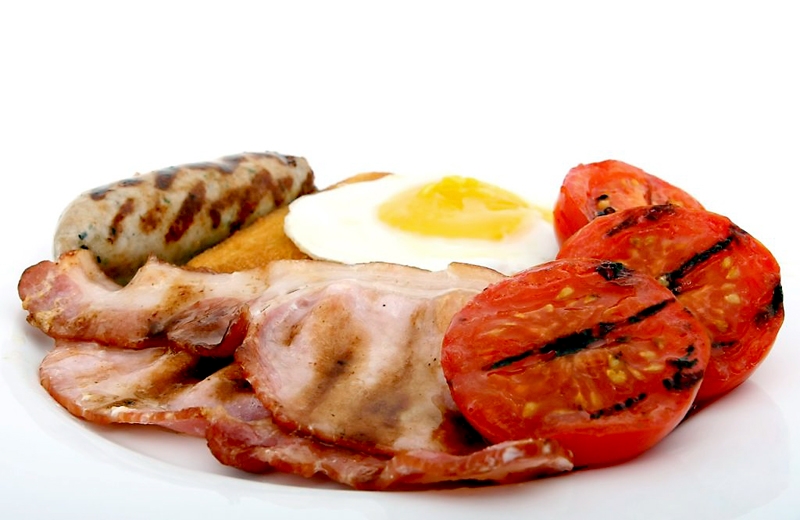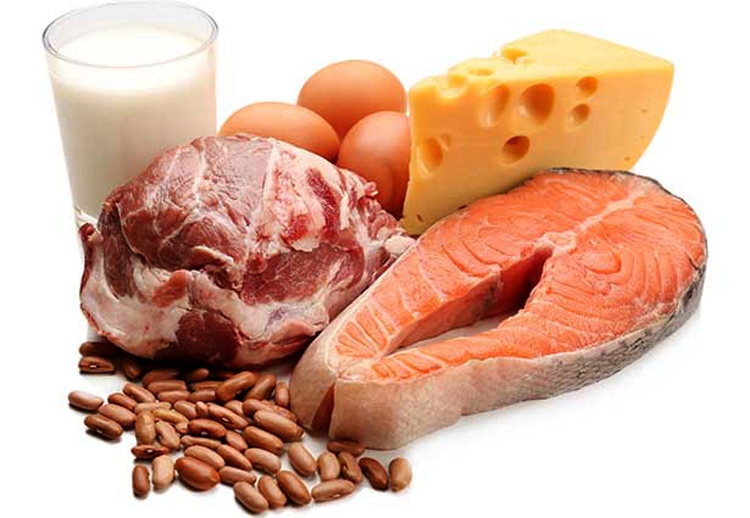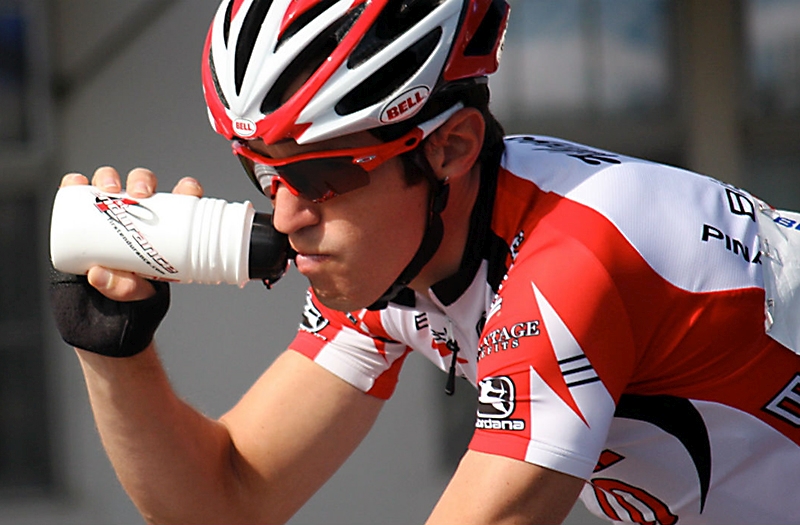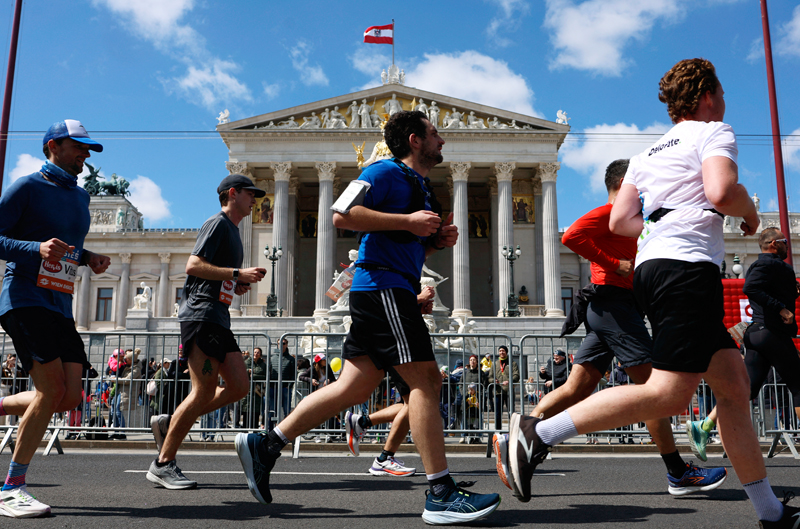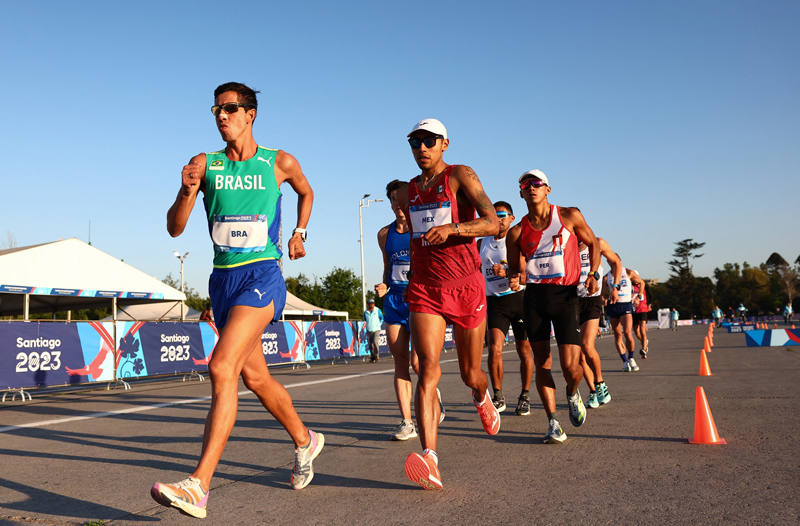You are viewing 1 of your 1 free articles. For unlimited access take a risk-free trial
Feel the burn: boosting fat metabolism for better performance

Can endurance athletes manipulate their training sessions in order to burn more body fat, and enhance endurance performance? Sports Performance Bulletin looks at what the science says
The way your body burns fuel for energy has a profound effect on your performance. For example, one of the main adaptations of aerobic training is that the body becomes much more efficient at burning fat for energy. Breaking down fat for energy requires relatively more oxygen than carbohydrate, so the improved delivery of oxygen to the working muscles, and higher levels of fat-burning enzymes within those muscles that comes with aerobic training, all help to boost fat burning during exercise. This effect goes a long way to explaining why elite marathon runners can run long and hard without hitting ‘the wall’(1)!Four rules for fat burning
The manner in which athletes need to train to enhance and maximise fat burning is a topic that has been covered in previous Sports Performance Bulletin articles (for an excellent introduction to this topic, see Professor Jeukendrup’s article, which you can read here). For the sake of brevity therefore, we will summarise four key points that all endurance athletes should bear in mind when trying to manipulate training to shed body fat:- For maximum fat burning during exercise, you should train aerobically at the higher end of your Fatzone (ie near ‘Fatmax’ – see figure 1), which depending on your fitness, will be around 60-80% of your maximum heart rate.
- When it comes to duration and frequency of training sessions, the key factor is total energy expenditure over any given time period; the goal therefore is to increase your total weekly training volume. For any given weekly volume however, evidence suggests that fewer but longer sessions may be preferable to lots of short, brief sessions for maximum fat burning.
- The longer after your last meal you train, the greater the proportion of energy will be derived from fat.
- Carbohydrate drinks taken before or during exercise will suppress fat burning and should be discouraged.
Figure 1: Fatmax during exercise

Exercise intensity (expressed as %HRmax and %VO2max) and fat oxidation. Fat oxidation increases from low to moderate exercise intensities, peaks at Fatmax and decreases as the exercise intensity increases further. The grey area represents the Fatzone: a range of exercise intensities where fat oxidation is high.
Over recent years, more and more evidence has been accumulating about maximising fat burning. The obvious question therefore is whether we can use this evidence to construct some training strategies for better endurance performance? The answer is yes, but it’s not ‘a one size fits all’ approach. The best strategy for early-season training - when fat loss and improved fat metabolism are the main concerns - is not necessarily appropriate for later in the season, when you’re more concerned with achieving a PB in your chosen event!
Early-season training
For most endurance athletes, the two primary goals during early season are to:- Build a solid endurance base from which to start more intense training as the competitive season approaches.
- Optimise body composition. For many athletes who’ve had some time off with Christmas and New Year intervening, this means losing a few pounds (or possibly even more!) of body fat to improve power to weight ratio.
The good news for early-season trainers is that the best training protocol for building endurance is also ideal for enhancing fat loss. Even better, it can be tweaked to make fat loss faster or to keep body fat at optimum levels once your desired target weight has been achieved. It needs to stressed however that optimising fat burning in the early season is not the same as optimising performance during competition, so some of the advice (especially nutritional recommendations) may seem counterintuitive at first sight. However, we’ll tackle fat burning and performance in the section on late-season training.
Maximising body fat loss
OK, it’s early season and you want to drop a few kilos before you build up your training intensity to prepare for competition. What strategies work and why? To answer this question, we need to have an appreciation of the role of key genes that control our metabolism. In particular, it’s important to understand that to really stimulate fat burning, we need to mimic something akin to a ‘famine mode’ in the body - or at the very least not encourage a ‘plentiful food supply mode’. This is because certain genes are stimulated to switch on fat burning only when energy supplies are perceived to be scarce by the body (read more on this topic in this article).Practical advice for early-season training
Assuming you’ve put together an early-season training programme that provides adequate volumes of relatively low-intensity training at or near your Fatmax, how can you manipulate it for maximum fat loss? Here are some simple guidelines:1 – Limit pre-exercise carbohydrate intake. Ingesting carbohydrate in the hours before exercise raises levels of a hormone called insulin, which subsequently suppresses fat oxidation by up to about 35%(4). This effect of insulin on fat oxidation may last as long as 6-8 hours after a meal, which means that the highest fat burning rates can be achieved after an overnight fast. A good way to achieve this is to train without breakfast. When Belgian scientists investigated the effect of a 6-week endurance training program carried out for three days per week (each session of consisting of 1-2 hours), they found that training in the fasted state -without carbohydrate - resulted in decreased muscle glycogen use, while the activity of various enzymes involved in fat metabolism was increased(5).
2 – Eliminate carbohydrate drink use. It sounds counterintuitive and goes against most conventional advice, but where fat burning rather than performance is the priority, carbohydrate drinks, which raise insulin and reduce fat oxidation, should be avoided. Studies have shown that although consuming carbohydrate drinks before endurance exercise boosts performance, the subsequent rise in blood sugar and insulin reduces the proportion of energy derived by burning fat(6,7). Don’t forget though you’ll still need to consume some energy-free fluid when training, especially in warm conditions.
3 – For afternoon/evening training, choose low GI pre-exercise meals and snacks earlier in the day. If you train in the afternoons or evenings, you can’t fast all day. But studies show that by sticking to low glycaemic index foods (low GI – foods that release their calories into the bloodstream gently) you can minimise blood sugar and insulin spikes, thereby increasing fat oxidation. For example, a study looked at runners who consumed 2 grams per kilo of bodyweight of carbohydrate three hours before running at around 70% of their maximum heart rate(8). It found that when the carbohydrate consumed was of a low GI type (pasta, chickpeas, sliced apples and low-fat cheese), fat oxidation rates were significantly higher during exercise and endurance was dramatically improved! Other studies on cyclists have produced similar results.
4 – Environment. The temperature in which you train can affect your capacity to oxidise fat. Studies show that both very warm and very cold environments can inhibit fat burning during exercise(9,10), with temperatures of about 10-20C being conducive to maximum fat oxidation. As well as dressing appropriately therefore, it may also be worth investing in a decent cooling fan to prevent overheating indoors when training on your turbo trainer, treadmill running, ergo rowing machine etc.
5 – Green tea extract (and black tea). There are a number of nutritional supplements out there that claim to help increase fat burning. The problem is that very few of these claims are supported by good scientific evidence. In plain English, many of these products don’t actually work! However, studies have shown that in humans, taking green tea extract about 30 minutes before exercise increases fat oxidation during exercise by about 20%(11) and that it also increases fat burning and endurance in mice studies(12,13).
The mechanisms are not well understood but it is likely that the active ingredient in green tea (EGCG) inhibits the breakdown of a hormone called noradrenaline. This in turn may result in higher blood concentrations of noradrenaline, which stimulates the release of stored fats making more fat available for oxidation in muscles during exercise. More recently, a growing body of evidence suggests that polyphenol compounds in fermented black tea (ie bog standard ‘builder’s tea’!) could be equally or even more effective at helping to promote fat/weight loss compared to green tea polyphenols(14).
Later-season training
The simple rules outlined above for early season training are fine when fat loss is the main goal. However, when maximum performance is key, these rules can’t be applied in the same way. This is primarily because if you want to excel during a race or perform intense training sessions, your muscles need to have plenty of carbohydrate – the premium grade fuel for high-intensity exercise – on tap.If we look at the tips above for fat loss during early season training, we can see that limiting pre-exercise carbohydrate intake and eliminating carbohydrate drink use are at odds with maximum performance on any particular day because they potentially lead to lower levels of muscle glycogen with a resulting drop in performance. However, some sports scientists have been investigating whether you can have your cake and eat it – ie whether you can promote some fat loss during training, yet still perform enough high-intensity training and fuel the muscles optimally for maximum performance. Unfortunately, while there are no studies specifically directed at answering this question, it is possible to piece together a strategy using data from a number of other studies in this area (discussed below).
One thing that should be emphasised however is that in overall terms, as your training volume and intensity increases, so does the importance of carbohydrate. Too little carbohydrate at the wrong time in your training cycle will seriously dent your performance - so seriously that no amount extra fat burning will adequately be able to compensate. In reality, this means when you’re not preparing for or performing specific fat-loss workouts, you should be aiming to top up carbohydrate reserves using a good high-carbohydrate diet and appropriate use of carbohydrate/recovery drinks. This is especially important in the run-up to a race day.
Practical advice for later-season training
1 - Designate ‘fat burning’ workouts - Examine your training schedule. If you’re an endurance runner/cyclist/triathlete etc, you’ll probably be performing one or maybe two longer, low-intensity endurance sessions in addition to your higher-intensity sessions such as intervals and faster paced short workouts. Designate one or at most two longer, low-intensity workouts as ‘fat burners’.2 - Fat burning workouts – If you can, time your fat-burning workouts for first thing in the morning and don’t take carbohydrate before or during (to enhance fat oxidation). Remember though, you’ll still need to drink fluid – either water or a zero-carb electrolyte drink (see later) is ideal. If you can’t perform these longer sessions first thing, ensure your last pre-exercise snack is taken at least 3 hours prior to training and consists of low-GI foods.
Regardless of when your session is, use green tea extract 30 minutes before training and be sure to consume a high quality carbohydrate-protein recovery drink immediately after training. This is because training in a relatively low-carbohydrate state produces more muscle damage and breakdown than when carbs are consumed(15). Taking a carbohydrate-protein drink soon after training will speed recovery and repair(16) and also help to minimise the post-exercise drop in immunity that often occurs after longer workouts(17). In addition, be sure to follow this with a carbohydrate-rich meal; you need to replenish those muscles ready for the next (higher intensity) workout.
3 - Other workouts and competition – For all your other workouts (including resistance training), you should use carbohydrate and carbohydrate drinks just as you would normally. However, because you’re performing a couple of your longer workouts without carbohydrate supplementation, you might prefer to use carbohydrate plus added protein for the remainder. This is to help ensure that you’re maximising muscle mass retention and minimising damage (a potential downside of training without carbohydrate in those longer workouts).
4 - Supplementation
- Caffeine. As mentioned above, green tea extract can be used before your longer workouts to enhance fat burning. Another supplement worth considering is caffeine. Caffeine is a central nervous system (CNS) stimulant and numerous studies have shown it can increase endurance performance by helping to offset CNS fatigue. This also makes it worth considering for longer ‘carbohydrate free training sessions’! There’s also some evidence that caffeine may also help increase fat oxidation. Studies using caffeine alone have proved rather inconclusive, but there’s evidence that when combined with green tea, caffeine may be somewhat more effective as a fat burner(18,19).
- Zero-carb electrolyte drinks. Another supplement that may be valuable (especially in warmer conditions when sweating occurs) is a zero-carbohydrate electrolyte/fluid supplement. These supply the body with the electrolyte minerals that are lost in sweat (helping to reduce the risk of cramping) but they don’t supply calories. This means they won’t blunt the potential for fat burning during longer workouts.
Listen to your body
Whatever your level, it’s important that you listen to your body at all times. For example, if you find that long rides on the bike without any carbohydrate intake are too exhausting, you could try holding off in the early stages of your ride and then start consuming carbs after the first hour or so when you’ve already achieved some enhanced fat burning. Indeed, this is exactly the strategy that British cyclist Chris Boardman used to follow on his longer early-morning rides.What you shouldn’t do if you’re feeling exhausted is to plough on regardless; everyone is different and it may be that even mild carbohydrate restriction doesn’t suit you. Remember too that your day-to-day diet remains as important as ever. After a long, carbohydrate-free training session, you’ll need to ensure that your diet is carbohydrate-rich to get those muscle glycogen stores topped up again!
Summary
The protocols described above for early and later season training will provide an effective way to help you both lower your body fat levels where needed and then keep them at an optimum level while you enter the later and more competitive phase of the season. These protocols do not involve large volumes of high-intensity training in a carbohydrate-depleted state – a practice that is known to impair immunity (increasing the risk of illness) and also increase the risk of overtraining and breakdown. This makes them suitable for sportsmen and women of all abilities. However, if you’re a relative beginner and want to keep things simple, following the early-season protocol alone will still reap significant rewards.References
- J Appl Physiol 60: 562-567, 1986
- J Appl Physiol. Jan;96(1):3-10, 2004
- J Physiol 541, 273-281, 2002
- J Sports Sci 21: 1017-1024, 2003
- J Appl Physiol 104: 1045-1055, 2008
- J Sports Sci. 2003 Dec;21(12):1017-24
- Appl Physiol Nutr Metab. 2008 Jun;33(3):441-9
- Int J Sport Nutr Exerc Metab. 2006 Oct;16(5):510-27
- Ergonomics. 2005 Sep 15-Nov 15;48(11-14):1558-67
- Med Sci Sports Exerc. 2002 May;34(5):774-9
- Am J Clin Nutr 87: 778-784, 2008
- Med Sci Sports Exerc. 2005 Nov;37(11):1884-92
- Am J Physiol Regul Integr Comp Physiol. 2005 Mar;288(3):R708-15
- Free Radic Res, 37(8): 835-40, 2003
- Molecules. 2018 May; 23(5): 1176.
- Int J Sport Nutr Exerc Metab. 2007 Feb;17(1):109-23
- Med Sci Sports Exerc. 2005 Aug;37(8):1283-90
- Obesity (Silver Spring). 2007 Feb;15(2):349-55
- Br J Nutr. 2009 Oct;102(8):1187-94
Newsletter Sign Up
Testimonials
Dr. Alexandra Fandetti-Robin, Back & Body Chiropractic
Elspeth Cowell MSCh DpodM SRCh HCPC reg
William Hunter, Nuffield Health
Newsletter Sign Up
Coaches Testimonials
Dr. Alexandra Fandetti-Robin, Back & Body Chiropractic
Elspeth Cowell MSCh DpodM SRCh HCPC reg
William Hunter, Nuffield Health
Keep up with latest sports science research and apply it to maximize performance
Today you have the chance to join a group of athletes, and sports coaches/trainers who all have something special in common...
They use the latest research to improve performance for themselves and their clients - both athletes and sports teams - with help from global specialists in the fields of sports science, sports medicine and sports psychology.
They do this by reading Sports Performance Bulletin, an easy-to-digest but serious-minded journal dedicated to high performance sports. SPB offers a wealth of information and insight into the latest research, in an easily-accessible and understood format, along with a wealth of practical recommendations.
*includes 3 coaching manuals
Get Inspired
All the latest techniques and approaches
Sports Performance Bulletin helps dedicated endurance athletes improve their performance. Sense-checking the latest sports science research, and sourcing evidence and case studies to support findings, Sports Performance Bulletin turns proven insights into easily digestible practical advice. Supporting athletes, coaches and professionals who wish to ensure their guidance and programmes are kept right up to date and based on credible science.
